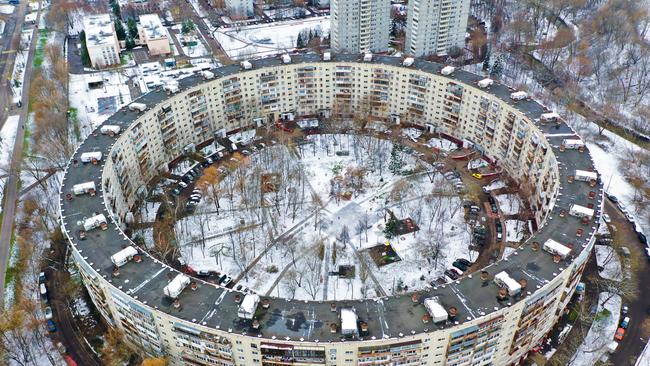Russian invasion means potential pain for home loan interest rates
Russia’s a long way from Australian cities but Vladimir Putin’s invasion of Ukraine could have a large impact on your mortgage.
In Moscow, Russia, a typical two-bedroom apartment costs you about $310,000, while in Saint Petersburg to the north you’ll pay less than $200,000.
It’s a nation where about two-thirds of the population lives in apartments, the official interest rate has just jumped from 9.5 per cent to 20 per cent, and the average mortgage size is the Russian rouble equivalent of about $60,000.
Russia is a long way from Australia’s capital cities – in terms of debts, interest rates, home prices and politics – but Vladimir Putin’s invasion of Ukraine could have a serious impact on your home loan.
This is because of the interconnected global economy, and the fact that the world was already dealing with rising inflation and interest rates as countries recover from the pandemic.
Then Putin threw a giant spanner into the works.
Aussie mortgage interest rates are broadly driven by the Consumer Price Index inflation rate, which is currently 3.5 per cent but is expected to follow other countries and head higher.
And if Russia – a huge oil and gas producer and exporter to Europe – is banned from exporting petroleum or decides it doesn’t want to and would rather fuel a huge energy crisis, we could see oil prices surging well above the $US110 a barrel level they’ve hit lately.

Oil and gas prices flow through to all areas of the economy – not just petrol prices motorists pay at the pump. Trucks cost more to run, so goods become more expensive. Travel costs more, and pretty much everything else costs more.
This means even higher inflation, which means potentially increased mortgage pain for Aussie borrowers.
The Reserve Bank of Australia uses its official cash rate as a lever to help keep underlying inflation in Australia within a 2-3 per cent target band. When inflation goes above 3 per cent, rate rises become likely.
Inflation has been below 3 per cent for years and the RBA’s official cash rate is a tiny 0.1 per cent. There are already forecasts that we could see more than 1 per cent of RBA rate rises by mid-2023, and that was before Russia invaded its neighbouring country of 43 million people.
Financial markets don’t like uncertainty, and the fact that nobody knows what Putin will do next – he’s already mentioned his nuclear weapons – dials up globally uncertainty to 11.
Oil and gas may be yesterday’s fossil fuels but they’re still widely used by a vast majority of the world’s population. Food prices could also be impacted by war, as well as further stresses on global supply chains.
If Australia imports more inflation, people with mortgages will pay the price – although not as much as in previous years.
Today more than 40 per cent of Aussie home loans are on fixed rates, which means they won’t be hit by rate rises until their fixed term expires.
A drawn-out war in Europe could outlast those borrowers’ fixed terms, but if the war escalates globally home loan debts may be the least of our worries.






To join the conversation, please log in. Don't have an account? Register
Join the conversation, you are commenting as Logout